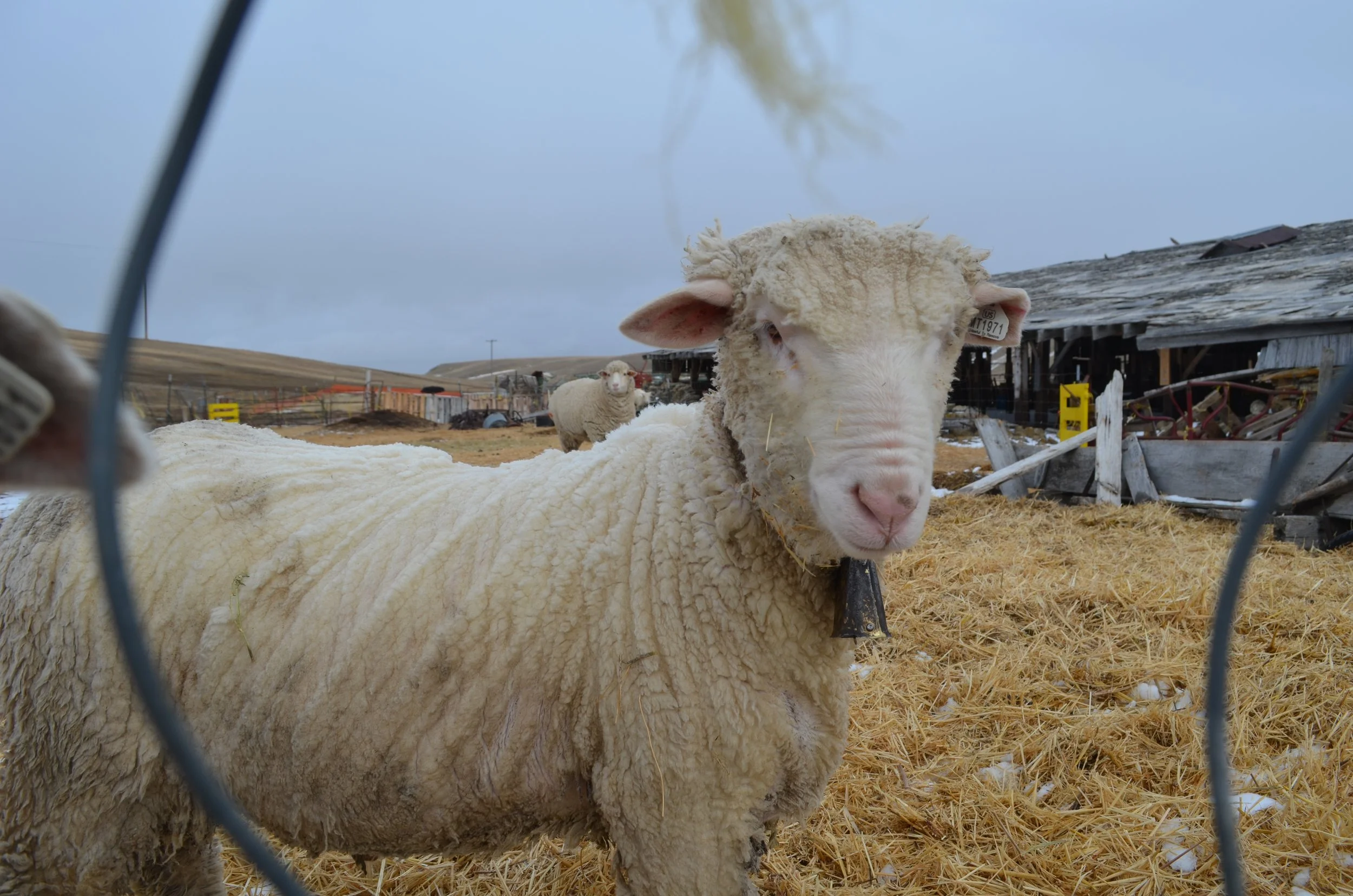Hauling Lambs to Auction
The typical seasonal market for lambs tops out in January or February each year.
I sell many lambs directly to my meat customers, but I always have some to send to the livestock auction.
Usually, I team up with my neighbors to fill horse trailers for the 250-mile ride to the Billings auction.
The sheep producer community is small and it makes sense to work together.
Last year, we agreed to wait until the only February sale to haul lambs.
Snow pelted the windshields of the trucks and ice threatened to dump trailers in the ditch on every corner.
The road has a lot of corners on the way to Billings.
So this year, I decided I would haul lambs in January -- if the roads were good.
After all, who knows what February weather will be like.
It looked like I would have extra space on the trailer so I called my neighbor to offer to haul his lambs, too.
A few days before the trip, my brother, Roger, and my friend helped me pierce the required individual lamb identification tags on the lambs I planned to sell.
I realized my lambs were bigger than I expected and would take up more room.
Yet my neighbor, Kevin, was counting on my ride for his lambs, too.
Another neighbor with a longer trailer rescued us.
I could borrow his trailer and still make the trip.
By daylight on Saturday morning, Roger, my daughter, Abby, and I were at the barn, loading lambs.
My lambs seemed to grow even larger.
My Worry Meter grew with the lambs.
We lifted a few into the nose of the trailer, using all of the available space.
The biggest risk of loading lambs too tightly is that they will fall and others will stomp on them.
The second biggest risk is that they will lower their head below the other lambs’ bodies and suffocate.
Over the years, both of these have killed a couple of my lambs.
We saved one empty compartment and then I met Kevin in Conrad to back our trailers together and push his 30 lambs from his trailer to mine.
All but three lambs fit, snugly, but comfortably.
We thought about leaving the last three lambs at home, but instead we slipped through the side door and lifted a few more of mine into the nose of the trailer, then shuffled lambs to load Kevin’s last three.
Halfway to Billings, I stopped for fuel and to check lambs.
Hooves poked out the bottom of the trailer.
My Worry Meter touched the red zone.
I slipped inside, afraid Kevin’s lambs would escape but desperate, then lifted lambs upright.
Then I drove as quickly and smoothly as I could to the auction yard.
When I pulled in, I didn’t see an attendant anywhere, only hooves poking out the end of the trailer.
Worry Meter sirens screamed.
I flung open gates, rearranged pens and launched my trailer door open.
As Kevin’s lambs spilled out the back, I heard an angry voice yelling “Stop!”
Too bad.
These lambs were coming off the trailer.
The attendant yelled until she saw the lambs laying in the trailer.
One’s eyes glazed over.
Too late.
We looked at each other and both of our attitudes changed.
She was overwhelmed by single-handedly managing unexpected semi-loads of lambs.
I was overwhelmed by the responsibility of killing Kevin’s lamb.
By the time I pulled lambs from the trailer nose, my boots and jeans reeked.
Then I called Kevin to say we should have shipped 27.
Fortunately, the lamb market is high.
Kevin and I both received good prices for our live lambs.
And I learned about trailer capacity.
And trusting my instincts.
